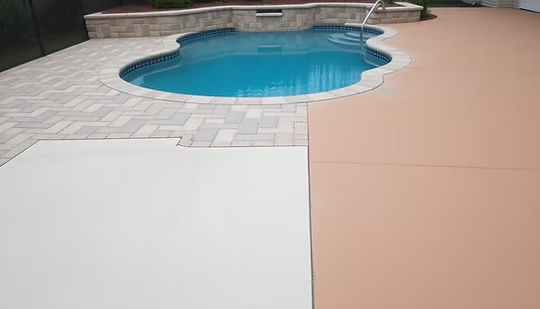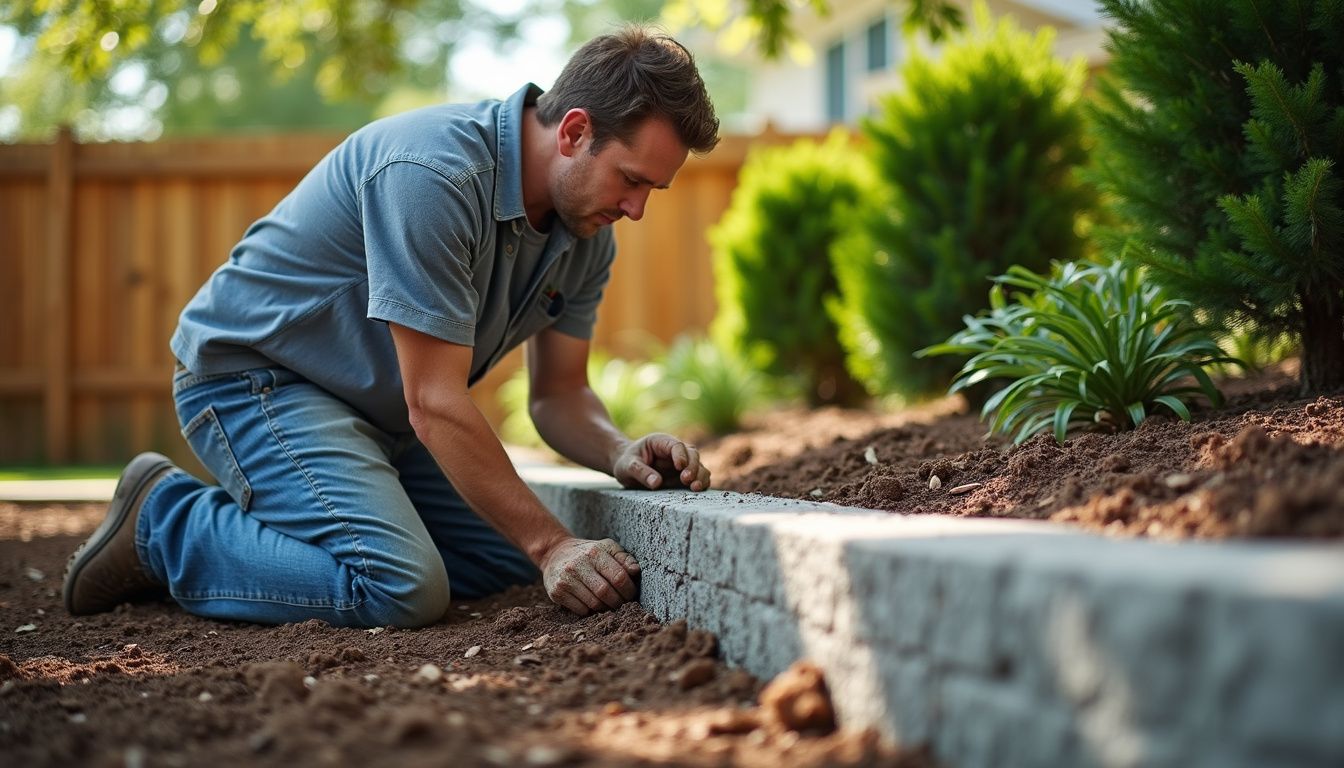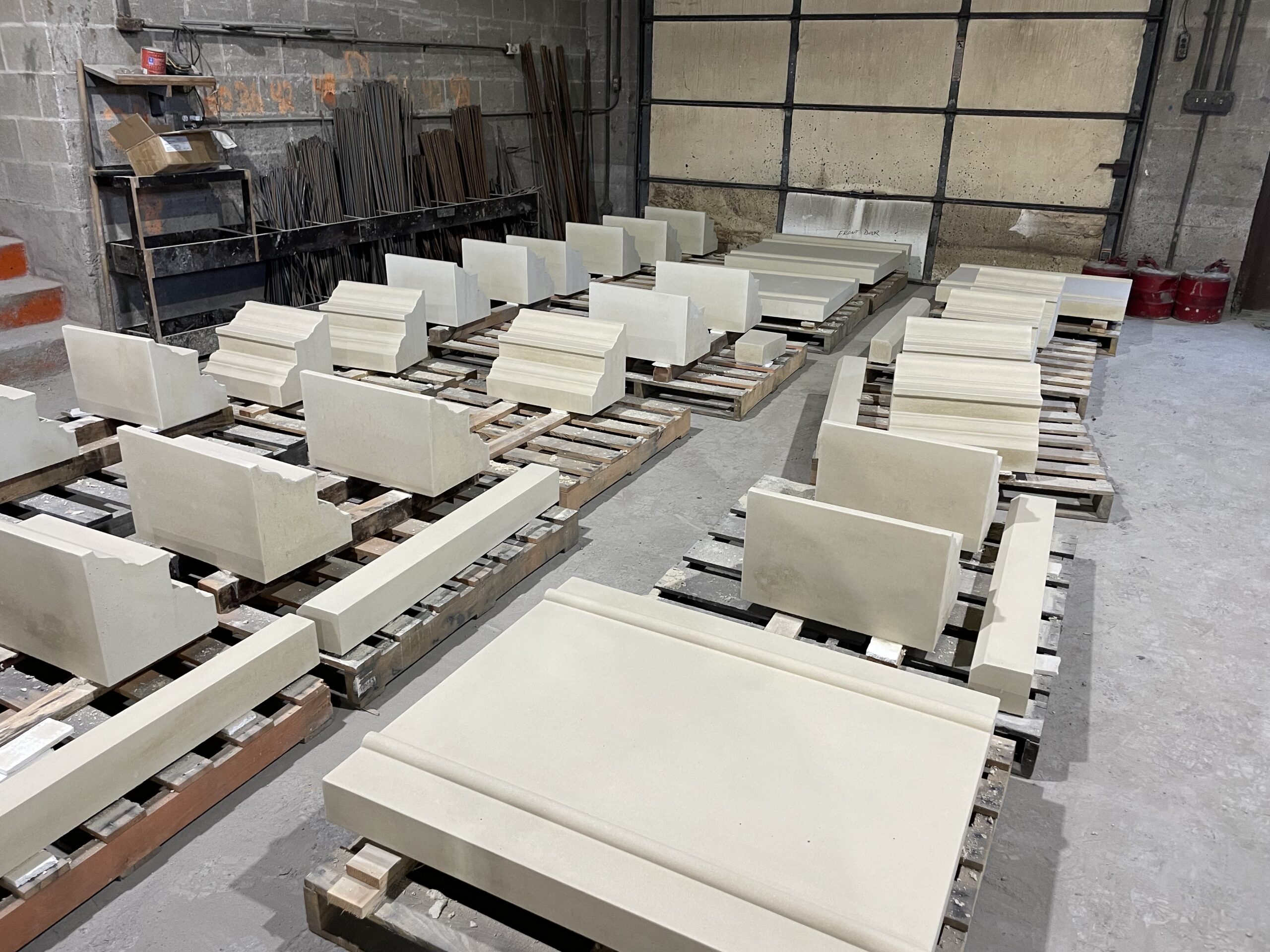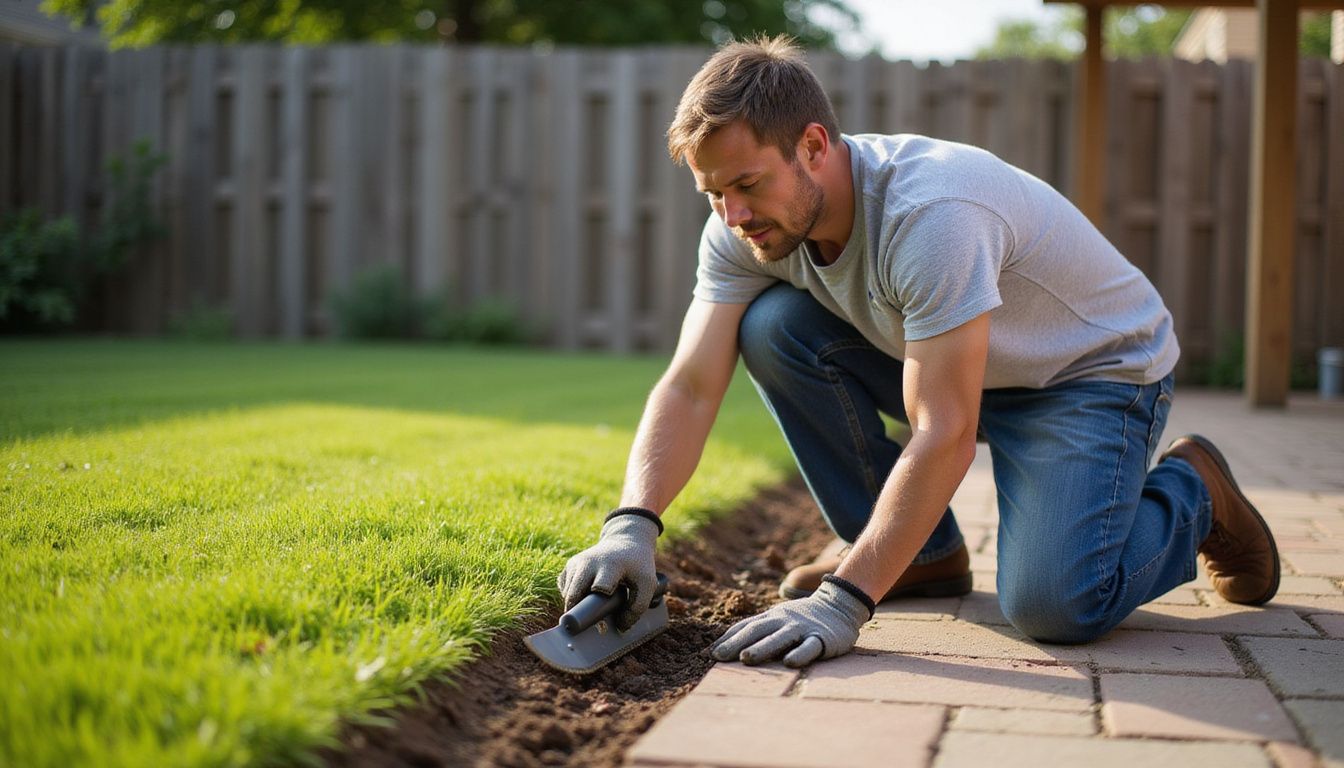Are you torn between pavers and concrete for your pool area? Many homeowners face this dilemma when planning their outdoor space.
This article will compare these two popular options to help you make the best choice for your pool deck. Is it better to have pavers or concrete around a pool? Let’s find out.
Overview of Pavers and Concrete
Pavers and concrete offer distinct options for pool surroundings. Each material has unique features that affect cost, upkeep, and style choices.
Benefits of Pavers
Pavers offer numerous advantages for pool surroundings. They provide superior durability compared to concrete, resisting cracks and damage more effectively. This resilience translates to a longer lifespan, making pavers a wise long-term investment despite higher initial costs.
Travertine pavers, in particular, excel in beauty and heat resistance, enhancing both aesthetics and comfort around the pool area.
Another significant benefit of pavers is their cooler surface temperature when exposed to sunlight. This feature makes them more comfortable for bare feet, especially during hot summer days.
Pavers also boast impressive design flexibility, allowing for easy customization and future modifications. Their modular nature facilitates simple repairs and additions, ensuring the pool area remains attractive and functional for years to come.
Benefits of Concrete
While pavers offer unique advantages, concrete presents its own set of benefits for pool surroundings. Concrete stands out as a practical and cost-effective option for pool decks. Its initial installation costs are significantly lower than pavers.
This makes concrete an attractive choice for budget-conscious homeowners.
Concrete’s durability and low maintenance requirements appeal to many pool owners. It resists weed growth, reducing the need for frequent upkeep. Stamped concrete pool decks offer aesthetic versatility, mimicking the look of more expensive materials at a fraction of the cost.
Concrete’s smooth surface also provides a safe, slip-resistant area for swimmers. Its heat-resistant properties make it comfortable for bare feet, even on hot summer days. For those seeking a straightforward, long-lasting solution, concrete proves to be a reliable choice for pool surroundings.

Cost Comparison
Money matters when choosing between pavers and concrete. We’ll break down the costs for both options.
Initial Installation Costs
Initial installation costs for pavers and concrete differ significantly. Pavers are typically the pricier option upfront. Concrete, on the other hand, costs less to install, which appeals to many homeowners on a budget.
This price gap often influences the decision-making process for pool surroundings.
Despite the higher initial expense, pavers offer long-term value. Their durability and ease of repair make them a sound investment over time. Concrete’s lower price tag comes with potential drawbacks, such as cracking and difficulty in repairs.
Homeowners must weigh these factors against their immediate financial constraints when choosing between pavers and concrete for their pool area.
Long-term Maintenance Costs
Long-term maintenance costs play a crucial role in deciding between pavers and concrete for pool surroundings. Pavers, despite their higher initial cost, often prove more economical over time.
Their durability and ease of repair make them a smart investment. Concrete, while cheaper upfront, may require more frequent repairs due to cracking and staining, potentially increasing expenses down the line.
Durability
Durability plays key roles in choosing between pavers and concrete for pool surroundings. Both options have different lifespans and upkeep needs, which affect long-term costs and appearance.
Lifespan of Pavers vs. Concrete
Pavers and concrete offer different lifespans for pool surrounds. Concrete typically lasts 20-30 years, while pavers can endure for 50 years or more. Pavers’ durability stems from their individual units, which flex with ground movement and resist cracking. Their easy repair process allows for replacing individual units rather than entire sections, extending their useful life. This advantage makes pavers a superior investment for pool surrounds
Concrete, though solid, may develop cracks over time due to temperature changes and settling, although their lifespan often depends on proper installation and maintenance. You can get a longer lifespan by opting for precast concrete.
For more on precast options, check out Natural Stone vs Precast Concrete Pool Coping and What is Precast Pool Coping.
Aesthetic and Design Flexibility
Pavers offer more design options than concrete. You can mix colors, shapes, and patterns to create unique looks for your pool area.
Customization Options with Pavers
Pavers offer a wide array of customization options for pool surroundings. Homeowners can choose from various shapes, sizes, colors, and textures to create unique patterns and designs.
The versatility of pavers allows for creative layouts, from herringbone to basket weave patterns, giving each pool area a distinct look.
Customization Options with Concrete
Homeowners can customize concrete finishes with stamped patterns, vibrant stains, and textured surfaces to mimic materials like stone or wood.
The ability to pour concrete into any shape or size makes it perfect for creating seamless, unique layouts. From sleek, modern designs to more natural, rustic appearances, concrete offers nearly endless possibilities for achieving a personalized and aesthetically pleasing pool area.
Conclusion
Both pavers and concrete offer unique benefits for pool surroundings. Pavers provide aesthetic appeal and customization options, while concrete boasts practicality and lower initial costs.
Your choice depends on your priorities: long-term value or immediate savings. Pavers excel in durability and heat resistance, making them a smart investment for pool areas. Ultimately, your decision should align with your budget, maintenance preferences, and desired look for your outdoor space.
FAQs
1. How do pavers and concrete compare in terms of durability for pool surrounds?
Pavers and concrete exhibit distinct durability characteristics when used around pools. Concrete offers a solid, uniform surface but may crack over time due to temperature fluctuations and ground movement. Pavers, conversely, provide flexibility and can be individually replaced if damaged, potentially offering a longer-lasting solution in certain environments.
2. What are the aesthetic differences between pavers and concrete for pool areas?
Aesthetically, pavers offer more versatility in design, color, and pattern options, allowing for customization to suit various architectural styles. Concrete, while more limited in design flexibility, can be stamped or stained to mimic other materials. The choice between the two often depends on the desired visual impact and integration with existing landscaping.
3. How do maintenance requirements differ between pavers and concrete?
Maintenance needs vary between these materials. Concrete typically requires less frequent upkeep but may need periodic sealing to prevent staining and deterioration. Pavers might necessitate more regular attention, such as re-sanding joints and addressing potential weed growth between stones. However, pavers’ modular nature facilitates easier repairs compared to concrete’s monolithic structure.
For more details on concrete coping, you can explore these related articles:
Recent Posts

Why Landscaping Pros Prefer Precast Concrete Over Poured-in-Place

Why & How is Precast Concrete Prestressed?

